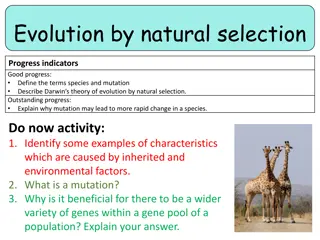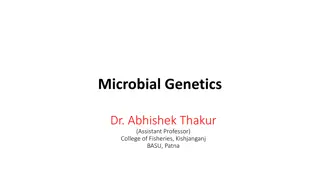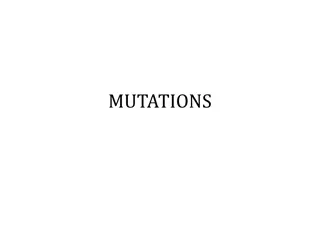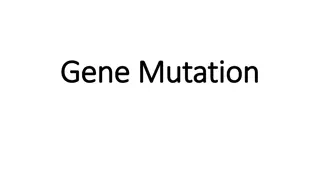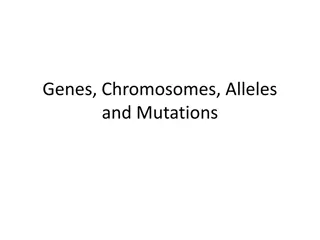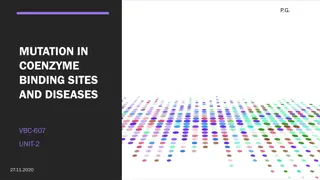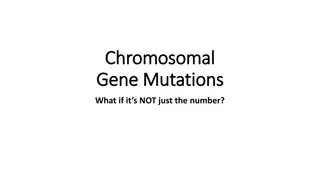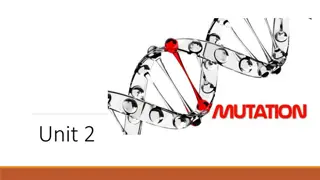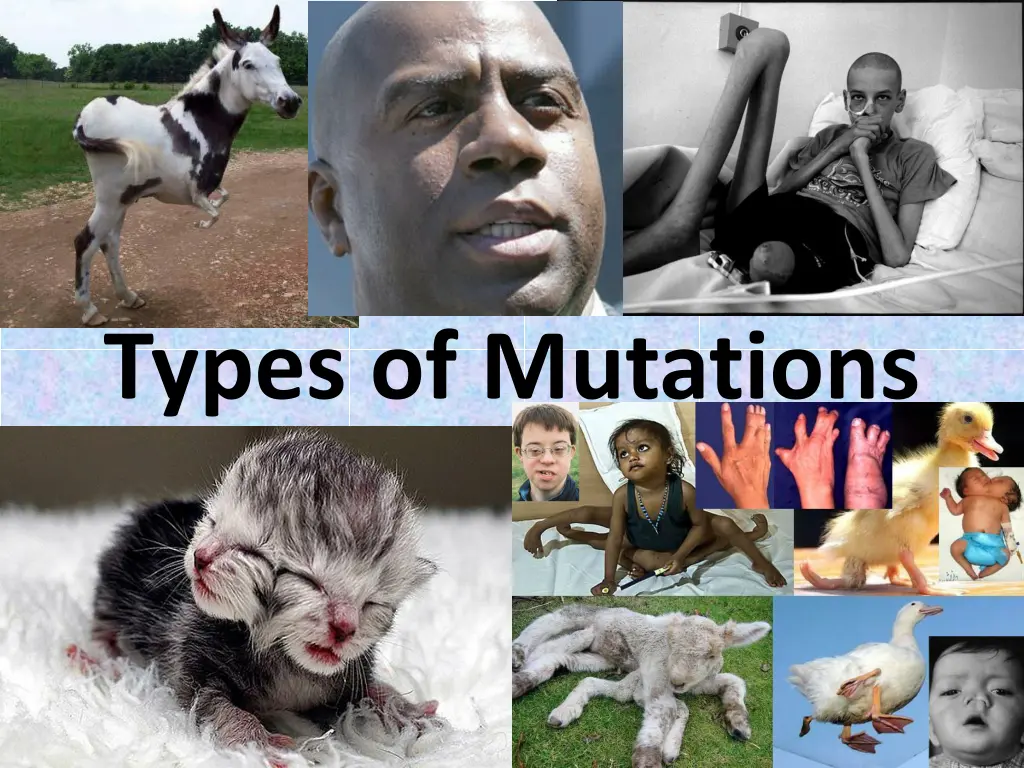
Inherited Genetic Mutations: Understanding Different Types and Impacts
Dive into the world of inherited genetic mutations with a focus on diseases such as albinism, sickle cell anemia, PKU, hemophilia, color blindness, Huntington disease, and Tay-Sachs disease. Explore the causes, symptoms, and impacts of these mutations on the body, shedding light on the importance of genetic understanding and healthcare advancements.
Download Presentation

Please find below an Image/Link to download the presentation.
The content on the website is provided AS IS for your information and personal use only. It may not be sold, licensed, or shared on other websites without obtaining consent from the author. If you encounter any issues during the download, it is possible that the publisher has removed the file from their server.
You are allowed to download the files provided on this website for personal or commercial use, subject to the condition that they are used lawfully. All files are the property of their respective owners.
The content on the website is provided AS IS for your information and personal use only. It may not be sold, licensed, or shared on other websites without obtaining consent from the author.
E N D
Presentation Transcript
Albinism Albinism occurs when one of several genetic defects makes the body unable to produce or distribute melanin, a natural substance that gives color to your hair, skin, and iris of the eye.
Sickle Cell Anemia Sickle cell anemia is a disease passed down through families in which red blood cells form an abnormal sickle or crescent shape. Red blood cells carry oxygen to the body and are normally shaped like a disc.
PKU (Phenyiketonuria) resulting from a genetic mutation, in which the body lacks the enzyme to metabolize phenylalanine. If untreated, it results in developmental deficiency, seizures, and tumors. is an inherited disorder that increases the levels of a substance called phenylalanine in the blood. Phenylalanine is a building block of proteins (an amino acid) that is obtained through the diet. It is found in all proteins and in some artificial sweeteners.
Hemophilia Hemophilia refers to a group of bleeding disorders in which it takes a long time for the blood to clot. Ex. Bleeding into joints
Color Blindness Most color vision problems are inherited (genetic) and are present at birth. Inherited color blindness happens when you don't have one of these types of cone cells or they don't work right. You may not see one of these three basic colors, or you may see a different shade of that color or a different color. This type of color vision problem doesn't change over time. A color vision problem isn't always inherited. In some cases, a person can have an acquired color vision problem. This can be caused by: Aging. Eye problems, such as glaucoma, macular degeneration, cataracts, or diabetic retinopathy. Injury to the eye. Side effects of some medicines. Color blindness means that you have trouble seeing red, green, or blue or a mix of these colors. It s rare that a person sees no color at all.
Huntington Disease Huntington's disease is an inherited disease that causes the progressive breakdown (degeneration) of nerve cells in the brain. Huntington's disease has a broad impact on a person's functional abilities and usually results in movement, thinking (cognitive) and psychiatric disorders.
Tay-Sachs disease is a deadly disease of the nervous system passed down through families. Deafness Decreased eye contact, blindness Decreased muscle tone (loss of muscle strength) Delayed mental and social skills Dementia Increased startle reaction Irritability Listlessness Loss of motor skills Paralysis or loss of muscle function Seizures Slow growth
Cystic fibrosis Cystic fibrosis is a disease passed down through families that causes thick, sticky mucus to build up in the lungs, digestive tract, and other areas of the body. It is one of the most common chronic lung diseases in children and young adults. It is a life-threatening disorder.



